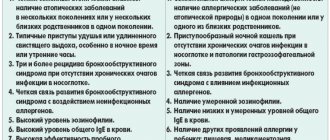Meningococcal infection is an acute infectious disease, the first sign of which is acute nasopharyngitis or inflammation of the nasopharynx, followed by the development of meningococcemia and purulent meningitis.
The causative agent of purulent meningitis and meningococcemia is Neisseria meningitidis, a gram-negative bacterium that exists in the form of different serological types, that is, it has a fairly large variety of antigens against which the human immune system will have to produce antibodies in case of contact with this infection.
Large epidemics of meningitis are most often caused by group A meningococcus. However, group B meningococcus is also of great importance in the epidemiology of meningitis.
Meningococcal infection, routes of infection
Meningococcal infection is transmitted by airborne droplets. The source of infection is always a person suffering from acute nasopharyngitis, with an acute generalized form of meningococcal infection, or a healthy carrier. Usually the number of carriers of meningococcus is no more than 5 percent, but during an epidemic in the source of infection the proportion of carriers can reach 50%. In this case, carriage of meningococcus is usually short-lived, about a week.
Periodic rises in the disease occur approximately every 10 to 12 years.
Treatment
When treating meningococcal infection, regardless of the degree of manifestation of the disease and its form, the doctor considers the patient’s condition as mortally dangerous. This is especially true for children, because more than half of them go through intensive care. The patient is hospitalized for emergency diagnostics. Antibiotics can be prescribed only after laboratory tests.
Depending on the serotype, the basis of treatment may be drugs such as penicillin, ampicillin, chloramphenicol. In epidemiological conditions with limited resources, ceftriaxone is preferred. Antibiotics are the basis of treatment, however, antipyretic, anticonvulsant and decongestant drugs, infusion, detoxification and oxygen therapy medications are used together with them. In this way, complex treatment of meningococcal infection is carried out with individual selection of drugs, under the constant supervision of a doctor. Therapy for complicated generalized forms can last for a month, and rehabilitation can take several years.
Meningococcal infection, signs and symptoms
As already mentioned, the most common form of meningococcal infection is nasopharyngitis. When meningococcus enters the upper respiratory tract, a local inflammatory process develops on the mucous membrane of the nasopharynx. The incubation period is 2–3 days, followed by the prodromal or initial period of the disease, during which the patient with meningococcal infection is most contagious. Acute nasopharyngitis develops over 1 to 3 days and is characterized by a rise in temperature to 38.0 C, bright hyperemia (redness) and granularity of the posterior wall of the pharynx, which is covered with mucopurulent discharge. Redness of the tonsils, cough, runny nose with mucous discharge mixed with greenery and pus are also noted. The disease can last 3-5 days and end with recovery, or it can become a generalized form. In this case, penetration of the pathogen into the bloodstream is accompanied by the appearance of chills, headache, and a rise in temperature to 40 C. Generalized meningococcal infection can lead to the development of purulent foci in various internal organs: lungs, heart, joints. But the worst complication is meningococcemia (meningococcal sepsis). Moreover, in young children, meningococcemia can occur suddenly against the background of complete health, with an increase in body temperature to 40 - 41 degrees C in a few hours and is accompanied by headache, uncontrollable vomiting, pain in the muscles and limbs. A characteristic sign of meningococcemia is the appearance of a star-shaped hemorrhagic rash (small pinpoint hemorrhages on the skin that resemble a starry sky).
And finally, another severe form of meningococcal infection is meningitis, which also develops against the background of acute nasopharyngitis. Meningococcal meningitis begins acutely, with a rise in body temperature to high numbers, a sharp painful headache, and uncontrollable vomiting not associated with food intake.
All forms of generalized meningococcal infection require immediate hospitalization in a specialized infectious diseases department and antibacterial and intensive detoxification therapy.
Meningococcal infection
The disease is caused by different strains (varieties) of meningococcus. The source of infection of a child can be a sick person or a “healthy” carrier of meningococcus. The number of such carriers for meningococcal infection is very large: for one case of the generalized form of the disease there are from 2 to 4 thousand healthy carriers of this microbe.
The carriers are usually adults, although they do not know about it, and mostly children get sick.
The pathogen lives in the nasopharynx and is released into the external environment when sneezing or talking. The danger increases when inflammation occurs in the nasopharynx. Fortunately, meningococcus is very unstable in environmental conditions: it survives no more than half an hour.
Infection occurs by airborne droplets with very close (at a distance of up to 50 cm) and prolonged contact. The infection has a pronounced winter-spring seasonality with a peak incidence from February to April.
Periodic increases in the incidence rate are recorded after about 10 years, which is associated with a change in the strain of the pathogen and the lack of immunity to it. Both isolated cases of morbidity in children and widespread cases in the form of outbreaks and epidemics are possible. During the period between epidemics, more young children get sick, and during an epidemic, more older children get sick.
Meningococcus is sensitive to antibiotics and sulfonamide drugs.
When a pathogen enters the mucous membrane of the nasopharynx, it most often does not cause inflammation: this is how a “healthy” carrier state is formed. But sometimes inflammatory changes occur in the nasopharynx, and a localized form of the disease develops: meningococcal nasopharyngitis.
Much less often (in 5% of cases) the microbe penetrates the blood and spreads to various organs. This is how meningococcal sepsis (meningococcemia) develops.
Severe toxic syndrome occurs as a result of the destruction of meningococci (under the influence of produced antibodies or antibiotics) and the release of a significant amount of endotoxin. This may cause the development of infectious-toxic shock.
In addition to internal organs (lungs, joints, adrenal glands, retina, heart), meningococcus can also affect the central nervous system: the membranes and substance of the brain and spinal cord. In these cases, purulent meningitis (or meningoencephalitis) develops.
After an illness and even as a result of carriage of meningococcus, persistent immunity is developed.
Symptoms
The incubation period can last from 2 to 10 days, usually it is short: 2-3 days.
There are localized and generalized clinical forms of meningococcal infection.
Localized:
- asymptomatic meningococcal carriage;
- meningococcal nasopharyngitis.
Generalized:
- meningococcemia (meningococcal sepsis);
- meningitis (inflammation of the membranes of the brain);
- meningoencephalitis (inflammation of both the membranes and substance of the brain);
- mixed form (a combination of meningococcemia and meningitis).
Rare forms include: meningococcal-induced arthritis, pneumonia, iridocyclitis, endocarditis.
Asymptomatic meningococcal carriage is the most common form of the disease (develops in 99.5% of all infected people). More often observed in adults. The condition does not show any signs and the person is unaware of his infection.
Meningococcal nasopharyngitis develops in 80% of patients with meningococcal infection. It manifests itself with the usual symptoms for an inflammatory process in the nasopharynx: acute onset, sore throat, nasal congestion, dry cough, headache. The temperature may rise within 37.5°C. The general condition and well-being suffer little.
Upon examination, redness in the pharynx and swelling of the mucous membrane, sometimes redness of the conjunctiva, and scanty mucopurulent discharge from the nose are revealed. More often the condition is regarded as a manifestation of an acute respiratory disease. The correct diagnosis is made only at the source of infection when examining contact persons.
The duration of the disease is from 2 to 7 days; ends with recovery. But often (about 30% of cases) this form precedes the subsequent development of a generalized form of infection.
Meningococcemia develops acutely, suddenly. Its manifestations increase very quickly. Parents can indicate the exact time of onset of the illness, not just the date. The temperature rises sharply with chills (up to 40°C), which is difficult to reduce with antipyretic drugs. There is repeated vomiting and severe headache and thirst.
But the main and most characteristic sign of meningococcal sepsis is a rash. It appears already on the first day of illness, less often on the second. The earlier the rash appears from the onset of the disease process, the more severe the course and prognosis of the disease.
More often it is localized on the thighs, legs, lower abdomen, and buttocks. The rash spreads quickly, literally “growing before our eyes.” The appearance of rashes on the face indicates the severity of the process. This is an unfavorable prognostic sign.
The size of the rash can vary: from small pinpoint hemorrhages to large irregular (“star-shaped”) elements of a purplish-bluish color. The rash is a hemorrhage into the skin, it does not disappear with pressure, and is located on a pale background of the skin. Pinpoint rashes last 3-4 days, become pigmented and disappear.
In the center of large elements of the rash, necrosis (death) of tissue may develop after a couple of days. The necrotic surface becomes covered with a crust; after it peels off, ulcers form, which scar very slowly (up to 3 weeks or more).
Necrosis can also occur on the tip of the nose, phalanges of the fingers, and ears with the development of dry gangrene.
Clinical symptoms of meningococcemia can grow very rapidly, especially with the fulminant variant of the disease. Hemorrhage into the conjunctiva or sclera of the eyes may appear even earlier than the skin rash. Other manifestations of hemorrhagic syndrome may also occur: bleeding (nasal, gastric, kidney) and hemorrhages in various organs.
Due to impaired blood supply and metabolic processes due to toxicosis, with meningococcemia, children have symptoms of damage to the kidneys, cardiovascular system, lungs, eyes, liver, and joints. All children experience shortness of breath, increased heart rate, and decreased blood pressure.
When the kidneys are involved in the process, changes appear in the urine (protein, red blood cells and white blood cells). Joint damage is characterized by pain in large joints and swelling, and limited range of motion.
In case of hemorrhage in the adrenal glands, acute adrenal insufficiency develops due to hormone deficiency, which can cause death. This complication, just like acute renal failure, is possible with the fulminant form of meningococcemia (hyperacute sepsis).
Clinically, adrenal insufficiency is manifested by a sharp drop in blood pressure, vomiting, the appearance of bluish spots on the skin against the background of severe pallor, frequent weak pulse, severe shortness of breath and subsequent disturbance of the breathing rhythm, and a drop in temperature below normal. In the absence of qualified assistance, death can occur even within a few hours.
A chronic form of meningococcemia with periodic relapses is extremely rare. It may last for several months.
If the meninges are involved in the pathological process, the child’s condition worsens sharply.
Purulent meningococcal meningitis is also characterized by an acute onset. A sharp diffuse headache appears, small children react to it with the appearance of anxiety and piercing crying. The temperature with chills can rise to 40°C and does not decrease after the child takes antipyretic medications.
The headache intensifies in response to any irritant: loud sound, light, even touch: in young children this manifests itself as a symptom of “repulsion of the mother’s hands.” Intensification of the headache is noted with the slightest movement, when turning the head.
No appetite. Repeated vomiting does not bring relief. It is not related to food intake. Diarrhea may also appear, especially at an early age. The child is pale, lethargic, pulse is rapid, blood pressure is reduced.
Muscle tone is increased. The child's position in bed is typical: lying on his side, “curled up,” with his legs pulled to his stomach and his head thrown back.
In small children, there is bulging, tension and pulsation of the large fontanelle. Sometimes there is a divergence of the seams between the bones of the skull. When a small child becomes dehydrated due to vomiting and loose stools, the fontanelle collapses.
Babies may experience reflex constipation and lack of urination.
Sometimes children experience motor restlessness, but there may also be lethargy, drowsiness and lethargy. In young children, you may notice trembling of the chin and hands, which is manifested by symptoms such as impaired consciousness, mental disorders, motor agitation and convulsions.
Upon examination, the doctor identifies focal symptoms: paresis (or paralysis), pathological changes in the cranial nerves (oculomotor disorders, decreased hearing and vision). In severe cases, when cerebral edema occurs, swallowing, speech, cardiac activity and breathing may be impaired.
In the mixed form, both clinical manifestations of meningitis and symptoms of meningococcemia may predominate.
During the course of the generalized form of the disease, rare forms can also develop: damage to the joints, heart, retina and lungs. But if meningococcus enters the lungs directly with air, then meningococcal pneumonia can develop primarily.
.
Diagnostics
During the examination, the doctor assesses the condition of the large fontanel in young children and checks for the presence of meningeal symptoms.
The following methods are used to diagnose meningococcal infection:
- survey of parents and child (if possible by age): allows you to find out the presence of contact with sick people, clarify complaints, the dynamics of the development of the disease and the sequence of symptoms;
- examination of the child by a doctor: assessment of the severity of the condition and identification of a number of clinical signs of the disease (temperature, skin color, rash, meningeal symptoms, condition of the large fontanel in young children, convulsions, etc.);
In the case of generalized forms of the disease, the diagnosis can be made based on clinical manifestations. To confirm the diagnosis, laboratory diagnostic methods are used (it is carried out in a hospital setting after emergency hospitalization of the child):
- clinical examination of blood and urine: in the blood of meningococcal infection there is an increased total number of leukocytes, an increase in the number of band and segmented leukocytes, the absence of eosinophils and an accelerated ESR; Urinalysis allows you to evaluate kidney function;
- clinical examination (bacterioscopy) of a thick drop of blood and cerebrospinal fluid sediment to detect meningococci;
- bacteriological method: culture of mucus from the nasopharynx, culture of cerebrospinal fluid, blood culture to isolate meningococcus and determine its sensitivity to antibiotics;
- a biochemical blood test (coagulogram, liver and kidney complex) allows you to assess the severity of the child’s condition;
- serological blood test (paired sera taken at intervals of 7 days) can detect antibodies to meningococcus and an increase in their titer; a 4-fold increase in titer is diagnostic;
Additional examination methods:
- consultations with a neurologist, ENT doctor and ophthalmologist (fundus examination);
- in some cases, echoencephalography (ultrasound examination of the brain to diagnose complications of the disease) and computed tomography are performed;
- According to indications, ECG and echocardiography may be prescribed.
Treatment
At the slightest suspicion of meningococcal infection, urgent hospitalization is carried out.
At home, it is possible to treat carriers of meningococcus and meningococcal nasopharyngitis (if there are no other children in the family at preschool age).
For the treatment of nasopharyngitis of meningococcal etiology, the following is prescribed:
- antibiotics orally in an age-appropriate dosage;
- gargling with furatsilin solution;
Treatment of generalized forms includes:
- antibacterial therapy;
- hormonal drugs;
- detoxification therapy;
- symptomatic treatment.
In order to influence meningococcus, Penicillin and Levomycetin-succinate are prescribed. The choice of antibiotic, its dosage, and the duration of the course depend on the clinical form of the disease, severity, age and body weight of the child and his other individual characteristics.
When treating meningitis and meningoencephalitis, high doses of antibiotics are used to overcome the blood-brain barrier and create a sufficient concentration of the antibiotic in the brain matter. Penicillin is preferably prescribed.
For meningococcemia, Prednisolone and Levomycetin-succinate are administered at the prehospital stage (in the clinic or by ambulance staff), and not Penicillin, which has a detrimental effect on meningococcus. When the microbe dies, endotoxin is released in large quantities, and infectious-toxic shock can develop. And Levomycetin will only prevent the pathogen from multiplying.
Hormonal drugs (Prednisolone, Hydrocortisone) are used in cases of severe infection in order to suppress the violent reaction of the immune system to the penetration of the pathogen and to maintain blood pressure at the proper level.
In case of developing infectious-toxic shock, treatment is carried out in an intensive care unit.
The following are used as detoxification agents: 10% glucose solution, plasma and plasma substitutes, Ringer's solution, Reopoliglyukin, etc. Plasmapheresis and ultraviolet irradiation of blood can be used.
Symptomatic therapy includes the prescription of anticonvulsants (Sibazon, Relanium, Sodium Oxybutyrate), cardiac drugs (Korglykon, Cordiamin), diuretics (Lasix), vitamins (C, group B), heparin under the control of the blood coagulation system.
To reduce cerebral hypoxia, oxygen therapy and cerebral hypothermia are used (applying an ice pack to the head).
If breathing is impaired, the child is connected to an artificial respiration apparatus.
Prognosis and outcomes of the disease
During the recovery period, weakness and increased intracranial pressure may be noted, which disappear after a few months.
The prognosis is more severe in children under one year of age. In rare cases, they may develop severe consequences in the form of hydrocephalus and epilepsy.
Complications of meningococcal infection are divided into specific and nonspecific. Specific (develops at an early stage of the disease):
- infectious-toxic shock;
- acute cerebral edema;
- bleeding and hemorrhage;
- acute adrenal insufficiency;
- acute heart failure;
- pulmonary edema, etc.
Nonspecific (due to other bacterial flora):
- pneumonia;
- otitis media, etc.
Specific complications are manifestations of the pathological process itself. Any of them can cause the death of a child.
After the illness, residual effects and complications can be detected.
Functional residual effects:
- asthenic syndrome, the manifestation of which at an early age is emotional instability and motor hyperactivity, disinhibition, and at an older age - decreased memory and fatigue;
- vegetative-vascular dystonia during puberty in adolescents.
Organic complications:
- hydrocephalus (increased amount of fluid in the cranial cavity);
- increased intracranial pressure;
- child's lag in psychomotor development;
- decreased or loss of hearing;
- epileptiform (convulsive) syndrome;
- paresis with movement disorders.
Prevention
Preventive measures can be considered:
- early detection and hospitalization of patients;
- measures at the source of infection: identification of carriers of meningococcus and their treatment, 10-day observation of those in contact with the patient and their 2-fold examination (nasopharyngeal swab), admission of contact children to kindergarten only after a negative examination result;
- discharge of a recovered person from the hospital only after a 2-fold negative bacteriological analysis of mucus from the nasopharynx (done 3 days after the course of treatment with an interval of 1 or 2 days);
- limiting contacts;
- during an outbreak of morbidity, exclusion of holding mass events with overcrowding of children;
- treatment of chronic foci of infection;
- hardening;
- vaccination (Meningo A+C vaccine): schoolchildren (if more than 2 cases of meningococcal infection are registered at school) and children before traveling to a region unfavorable for the incidence of this infection. The vaccine can be used in children from 1.5 years of age; immunity is formed by day 10 and lasts for 3-5 years.
Summary
Meningococcal infection is a serious disease, especially for young children. The danger of this infection is not only in the acute period (due to the development of complications and threats to life), but also after recovery (quite serious consequences can remain for life).
Considering the likelihood of a very rapid development of the disease, you should not delay the time to consult a doctor with any disease.
It must be remembered that a spinal puncture (which parents are so afraid of) is a necessary diagnostic procedure that will help the doctor prescribe the correct treatment.
Which doctor should I contact?
If symptoms of inflammation of the nasopharynx appear, you should usually contact a pediatrician, and adults should consult a therapist. If there is a rapid increase in temperature, deterioration of the condition, severe headache and especially the appearance of a skin rash, you should urgently call an ambulance. Treatment is carried out in an infectious diseases hospital.
ANTI-EPIDEMIC MEASURES IN THE SOCIETY OF MENINGOCOCCAL INFECTION
General events. Information about the sick person in the Center for Sensitive Diseases in the form of an Emergency Notification within 12 hours after identifying the patient. Epidemiological examination of the outbreak in order to identify and sanitize carriers and patients with erased forms; determination of the circle of persons subject to mandatory bacteriological examination. Measures regarding the source of the pathogen. Hospitalization of the patient, isolation of carriers.
Discharge from the hospital - with 2 negative bacteriological studies of nasopharyngeal mucus, carried out 3 days after the end of treatment. Measures regarding pathogen transmission factors. Disinfection: daily wet cleaning, ventilation, irradiation with UV rays and bactericidal lamps in the fireplace. Final disinfection is not carried out. Measures regarding contact persons in the outbreak. Medical observation for 10 days from the last visit to the sick team/daily examination of the skin and pharynx with the participation of an ENT doctor, thermometry/. Children, staff of preschool and school institutions, in universities and secondary specialized institutions are subject to bacteriological examination in the 1st year - the entire course where the patient is identified, in senior years - students of the group where the patient or carrier is identified. In kindergartens, biological examinations are carried out 2 times with an interval of 3-7 days. Emergency prevention. Children from 18 months. up to 7 years of age and first-year students, in the first 5 days after contact, active immunization is carried out with a meningococcal polysaccharide vaccine of serogroups A and C. In its absence, normal human immunoglobulin is administered. Previously vaccinated children are not given immunoglobulin.
Meningococcal infection and vaccination
The main group of people subject to vaccination against meningococcal infection are children living in closed communities, as well as those going on vacation to organized summer holiday camps. Polysaccharide meningococcal vaccines, such as Meningo A+C or Mencevax, are widely used in medical practice.
These vaccines are intended for immunization of children from 2 years of age and adults using a single dose of vaccine, followed by revaccination after 2 to 3 years.
Thus, meningococcal infection is certainly one of the diseases against which it is easier and cheaper to vaccinate in order to protect yourself from possible unpleasant complications. Naturally, the feasibility and safety of each vaccination must first be discussed with your attending physician, and, if necessary, with a specialist, an immunologist.
Complications and consequences
During illness, the following complications may occur:
- cerebral edema;
- hydrocephalus;
- hemorrhagic cerebral stroke;
- acute renal failure;
- paralysis and other dysfunctions.
Against the background of meningococcal infection, herpes, otitis media, and meningococcal pneumonia can develop. Severe disease can cause the development of asthenic syndrome, expressed in general weakness and periodic headaches. Lead to arterial hypertension, hearing loss, epilepsy and hemiparesis (paralytic damage to one side of the body). Patients who have had meningococcal infection often experience apathy and depression.
Effectiveness of vaccination
Vaccination is carried out once, the effectiveness is about 90%, immunity is formed on average within 5 days and lasts 3-5 years.
In December 2010, a new meningococcal group A conjugate vaccine was introduced throughout Burkina Faso and parts of Mali and Niger, where a total of 20 million people aged 1–29 years were vaccinated. Subsequently, in 2011, these countries reported the lowest ever number of confirmed cases of meningitis A during the epidemic season.
By the end of 2013, two years after the introduction of the MenAfriVac vaccine developed by WHO and PNTZ, 150 million people in African countries affected by meningitis A had been vaccinated. It is hoped that all 25 countries in the African meningitis belt will introduce this vaccine by 2021. With broad coverage of the target group aged 1–29 years, meningococcal A epidemics are expected to be eliminated in this region of Africa.
What complications may there be?
As mentioned above, if meningococcal infection is detected late, there is a high probability of death. However, even if treatment was prescribed on time, often the disease does not go away harmlessly. The consequences can lead to a variety of complications, ranging from hearing loss, vision and speech disorders, to amputation of limbs, paralysis, epilepsy and hydrocephalus. And here is another video (video by our partners - Sanofi Pasteur) with a girl who, at the age of 5, suffered a meningococcal infection and was left deaf for the rest of her life:
The nature of the inflammatory process in meningitis
Based on the analysis and appearance of the cerebrospinal fluid, as well as the patient’s condition, it is possible to determine the nature of the inflammatory process and quickly take therapeutic measures.
Purulent
A severe form of meningitis caused by bacteria is characterized by the accumulation of purulent exudate. As a result, the outflow of cerebrospinal fluid is disrupted, pronounced signs of intoxication are observed, and consciousness is often disturbed. It is necessary to prescribe a high dose of antibiotic, otherwise the mortality rate is very high - up to 95%.
Serous
It is a sign of viral meningitis. It proceeds favorably and often ends in complete recovery. It has a relatively short-term course: in the first 2-3 days from the onset of symptoms, an acute clinical picture is observed, and with timely treatment, improvement occurs already on days 5-6.
Disease Prevention
Post-infectious immunity. After an illness, a strong immunity develops that protects against re-infection. However, it occurs only in the serogroup of bacteria that caused the disease. In total, there are 12 types of meningococcal groups.
- Vaccination. 3 types of vaccines have been developed:
- Polyvalent polysaccharides (invented 30 years ago).
- Mono- and polyvalent conjugate vaccines (used since 1999).
- New monovalent conjugate vaccine MenA (developed in 2010-2011).
As much as possible, the drug can cover only 4 serogroups: A, C, Y and W. Unfortunately, such a vaccine has not yet been developed to protect against all types of infection.
The meningococcal vaccine is not included in the childhood vaccination schedule. You can only get vaccinated yourself. It should be carried out before traveling to countries at risk and for epidemiological reasons, i.e. during an epidemic when the serotype is known.
Urgent Care
The main method of treating meningococcemia is to prescribe antibacterial agents as soon as possible.
The drug of choice is chloramphenicol succinate; third generation cephalosporins can also be used. Levomycetin succinate is administered intramuscularly 4 times a day, 50-100 ml, the dosage is selected depending on the age and condition of the patient.
It is especially important to start emergency care in children right away, since their pathology progresses very quickly.
In case of fulminant form, it is necessary to urgently begin emergency measures. Vascular access must be provided immediately, as this will be more difficult to do against the background of a steady decrease in pressure. The patient is transferred, if necessary, to a ventilator. Use drugs to eliminate intoxication:
- saline;
- glucose;
- Ringer's solution;
- plasma;
- albumins.
Diuretics (Furosemide, Lasix) are used to prevent the development of cerebral edema, as well as for forced diuresis (use with caution if renal function is impaired). Anticonvulsant drugs - Diazepam (0.1-0.15 ml administered to the patient, if there is no effect within 5 minutes, repeat). In some cases, when the infection becomes severe, glucocorticosteroids are prescribed. If the above therapy fails to increase blood pressure, then the patient is given dopamine by slow intravenous drip (an infusion pump can be used).
Characteristic features of the rash
A skin rash with meningococcal infection is an important diagnostic sign. Its absence in most cases indicates a different nature of the disease.
A rash with meningococcemia appears on the first day from the onset of the disease, and the earlier the first elements are formed, the worse the prognosis. Elements of the rash are localized mainly on the legs, buttocks, thighs, and hands.
The rash initially has a maculopapular character, but then quickly acquires a hemorrhagic appearance. Individual elements have an irregular star shape, their size from a couple of millimeters to several centimeters. Upon palpation, you can notice that the rash is dense and slightly raised above the skin. In severe cases, the hemorrhagic rash spreads to the entire body, the elements merge and form extensive hemorrhages.
The rash is rarely found on the face; isolated elements are found on the earlobes and the tip of the nose. If meningococcal sepsis becomes fulminant, then the areas of the hemorrhagic rash merge with each other (usually on the extremities), forming a large affected area. This sign resembles the appearance of high boots or gloves, indicates the irreversibility of the changes, and the mortality rate is extremely high.
Hemorrhages can be located on the mucous membranes: on the conjunctiva, sclera, and in the oral cavity. The severity of skin lesions, the abundance of the rash, and the speed of its spread are important parameters for establishing the severity of an infectious patient.
Small rashes become pigmented after a while and then disappear completely. Large areas of skin damage are covered with a crust, which over time is torn off with the formation of a scar in this area. The development of gangrene and necrosis of the fingers and toes, hands and legs, feet, tips of the ears and nose is possible.
Meningococcus is not only in Africa
This infection is widespread throughout the world. And in Africa there is even a so-called “meningitis” or “meningococcal belt”:
However, this disease does not only exist somewhere far away, on other continents; unfortunately, it is also close to us. Outbreaks of meningococcal infection are recorded every now and then in different regions of Russia.
For example, in Novosibirsk in 2021, 25 cases of the disease were registered in less than two weeks. And this is very characteristic of this infection: usually long periods of well-being (10-15 years) are interrupted by sharp increases in incidence, which have a focal outbreak nature.
The increase in incidence can be explained by the widespread carriage of meningococcal bacteria. As the number of susceptible individuals increases, the number of cases increases. And declines are ensured by an increase in the immune layer as a result of latent immunization as bacterial carriage spreads among the population of a given territory.
You need to understand that during recession years the infection does not disappear: 50% of diseases occur in children under 5 years of age; 20% - for children aged 6-14 years. As age increases, incidence rates decrease, but carriage rates increase. The age group of 15-20 years is also subject to a high degree of susceptibility, because its representatives - students, military personnel - communicate intensively in schools, dormitories, barracks, etc. First of all, those who come from remote areas get sick, i.e. not previously in contact with the pathogen.
Why are doctors sometimes unable to identify meningococcal infection in the early stages of the disease and provide timely assistance? The fact is that the first symptoms of the disease are similar to the onset of a regular acute respiratory viral infection, and later medicine turns out to be powerless against the lightning-fast course of the disease. Moreover, during periods of prosperity, cases of the disease are so rare that the alertness of even experienced doctors, not to mention young novice doctors, gradually decreases.
One of the features that can also be canceled is that meningococcal infection is characterized by a winter-spring seasonality with the maximum number of diseases in February – April.
There are many real stories about how this can happen, here is one of them (a video from our partners - Sanofi Pasteur):
Advantages of JSC "SZDCM"
Laboratory tests are extremely important in the treatment, especially of such serious diseases. It is important to get not only the fastest, but also the most accurate and detailed result.
At your service:
- Laboratory with technological equipment.
- Qualified and friendly staff.
- Fast analysis and several options for obtaining results.
Medical centers and terminals are located in places with convenient transport links in St. Petersburg, Leningrad region, Veliky Novgorod, Staraya Russa, Okulovka and Pskov.
Latest epidemics
It is estimated that 80-85% of all cases in the meningitis belt are caused by group A meningococcus, and epidemics occur every 7-14 years. The highest rates of the disease are found in the meningitis belt of sub-Saharan Africa, stretching from Senegal in the west to Ethiopia in the east.
During the 2009 epidemic season, a total of 88,199 suspected cases, of which 5,352 were fatal, were reported in 14 African countries conducting enhanced surveillance. This is the largest number of victims since the 1996 epidemic.








